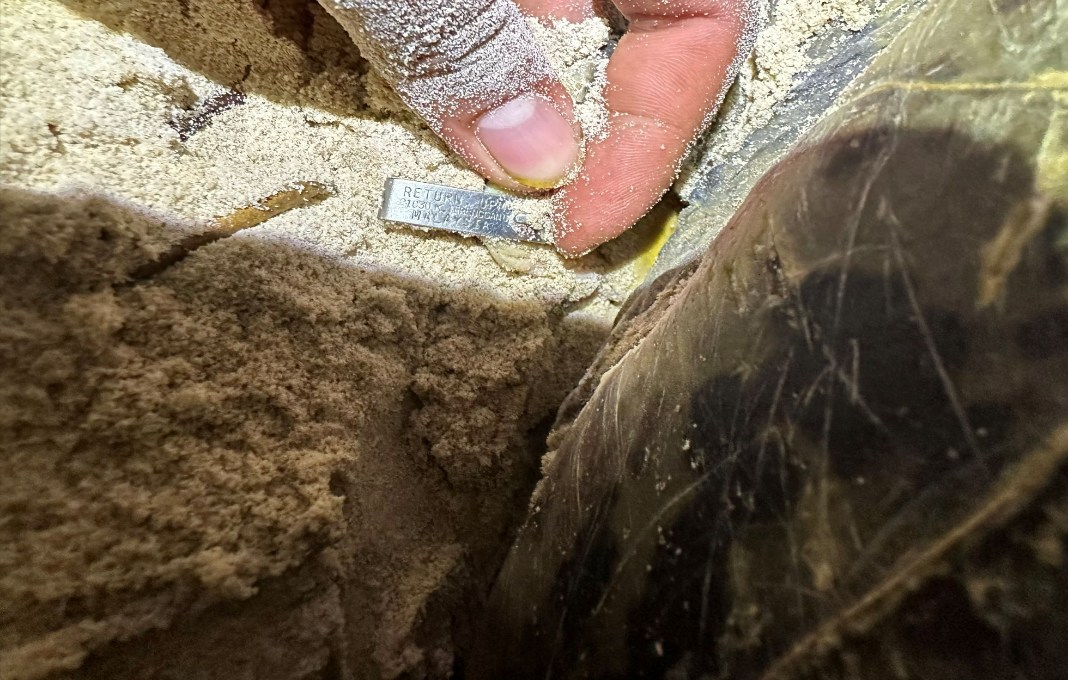A Malaysian-tagged olive ridley sea turtle was discovered laying eggs late on the night of April 22 through the early hours of April 23 on the shores of the Con Dao Archipelago, situated off Ba Ria-Vung Tau Province.
According to the Tuoi Tre news site, the mother sea turtle measured approximately 97 centimeters in length and 84 centimeters in width and weighed around 90 kilograms. After nesting on Con Dao, she laid a total of 108 eggs.
Six years prior, another olive ridley sea turtle bearing an Indonesian tag also visited Con Dao to lay eggs. Olive ridley sea turtles are classified as endangered by the International Union for Conservation of Nature.
Two intangible cultural heritages announced in Vinh Long
On April 18, the People’s Committee of Vinh Long Province held a ceremony to announce the decision to recognize Vinh Long’s Van Thanh Temple Festival and Hat Boi (a genre of traditional Vietnamese theater) as the national intangible cultural heritages.
The province’s Van Thanh Temple in Vinh Long City was built in 1864 and was completed in 1866. The temple was an original cultural establishment of the Nguyen Dynasty in the imperial city of Hue. As regards the traditional Vietnamese theater of Hat Boi, eight artists in Vinh Long have been granted the Merited Artist honorary titles by the State President.
Nguyen Thi Quyen Thanh, vice chairwoman of the People’s Committee of Vinh Long Province, told nld.com.vn that the newly recognized national intangible cultural heritages, together with other tangible and intangible cultural heritages of the province, would be preserved well as the motives and the driving forces for social, economic and cultural development of Vinh Long Province.
Rescuing a British tourist lost in forest
On April 20, the police forces of the northwestern province of Lai Chau set out to look for a British tourist who had been lost in Hoang Lien national forest.
At 11:30 p.m. on April 19, the police officers of Lai Chau Province were informed that a British tourist had been lost in the Hoang Lien national forest between Lai Chau and Lao Cai provinces. The victim panicked, was tired and hungry, and his cellphone’s battery was going to die.
After confirming the possible position of the victim, the Fire and Rescue Police Bureau of Lai Chau Province sent 20 officers to the site. At the same time, 32 police officers from Lai Chau’s Son Binh Commune and Tam Duong District also went to the site for the rescue. The policemen searched overnight and finally found out the lost British tourist at 8 a.m. on April 20.
Although being tired with some scratches on the body, the victim was in stable condition. According to tuoitre.vn, the Briton, Henwood Joseph Thomas, 18, traveled to Vietnam alone. He trekked the Hoang Lien national forest early on April 19 and was lost late that night. After having some water and food supplied by the policemen, he was brought back to his hotel in Sapa Town, Lao Cai Province.
A rare peafowl found in town
A white peafowl, whose tail was nearly one meter long, was found perching on the balcony on the third floor of a house in Thu Duc City, HCMC. The owner of the house caught the bird and transferred it to the HCMC Forest Protection Department a few days later.

On April 24, the forest wardens received the peafowl and transferred the bird to the Wildlife Rescue Station in HCMC’s outlying district of Cu Chi to take good care of the bird. Nguyen Cong Bang, head of the Wildlife Rescue Station, told vnexpress.net that the bird is an Indian peafowl (Pavo Cristatus), an endangered species. He added that Indian peafowls, especially peacocks, often have colorful feathers and tails, but the peafowl transferred to the station is completely white thanks to mutation breeding. After its health is recovered, the bird will be transferred to a zoo or a wildlife conservation center, said Bang.
According to the Saigon Zoo and Botanical Gardens, there are three white peafowls being kept at the zoo. Given the birds’ genetic mutation, white peafowls’ young birds will also have white feathers and tails like their parents.









